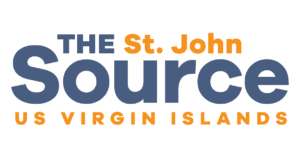WHOI in the News
NASA mission will study how hidden ocean swirls soak up heat of global warming
Science
Uncovering the mysteries of ancient hurricanes | Across the Sky podcast
St. Louis Post Dispatch
Want to save the whales? Reconsider the lobster, some say.
The Washington Post
Submersible Technology Advances At Speed At WHOI
Marine Technology Reporter
Hibernating corals and the microbiomes that sustain them
Science Daily
We’re decoding ancient hurricanes’ traces on the seafloor—and evidence from millennia of Atlantic storms is not good news for the coast
The Conversation
Invasive crab population keeps booming in Washington
KUOW
Shipworms can chew through a boat. Northeastern researchers explain their digestive process
News at Northeastern
WHOI Researchers Try Out Cutting-Edge Technology on STJ
The St. John Source
The Marine Lab in the Path of Climate Change’s Fury
WIRED Magazine
Photo | Glider returns to Santa Cruz with ocean data
The Santa Cruz Sentinel
WHOI Receives $2 million for CWATER Project
Eco Magazine
How Centuries-Old Whaling Logs Are Filling Gaps In Our Climate Knowledge
Honolulu Civil Beat
Beauty Products Keep Getting Recalled for Benzene. Just How Dangerous Is It?
Harper's Bazaar
The Ocean Pavilion Announces Schedule of Events for COP27
UNESCO
This Arctic Hydrothermal Vent Could Help Scientists Find Extraterrestrial Life
Popular Mechanics
Scientists team up to work on coral reef recovery, resilience
The Virgin Islands Daily News
Arctic hydrothermal vent site could help in search for extraterrestrial life
PHYS.ORG
How centuries-old whaling logs are filling gaps in our climate knowledge
Grist
Dolphins Whistle Their Names with Complex, Expressive Patterns
Scientific American
Coast Guard, Woods Hole researchers rescue 13 from sinking vessel off Virginia coast
WBUR
Antarctica’s emperor penguins at risk of extinction due to the climate crisis
CNN
North Atlantic Right whale population drops to about 340, worrying scientists
The Washington Post
Emperor Penguins Are Protected Under the Endangered Species Act
New York Times



















